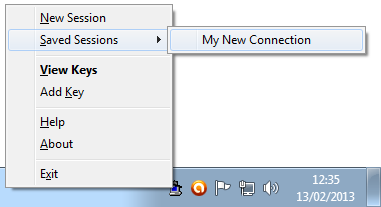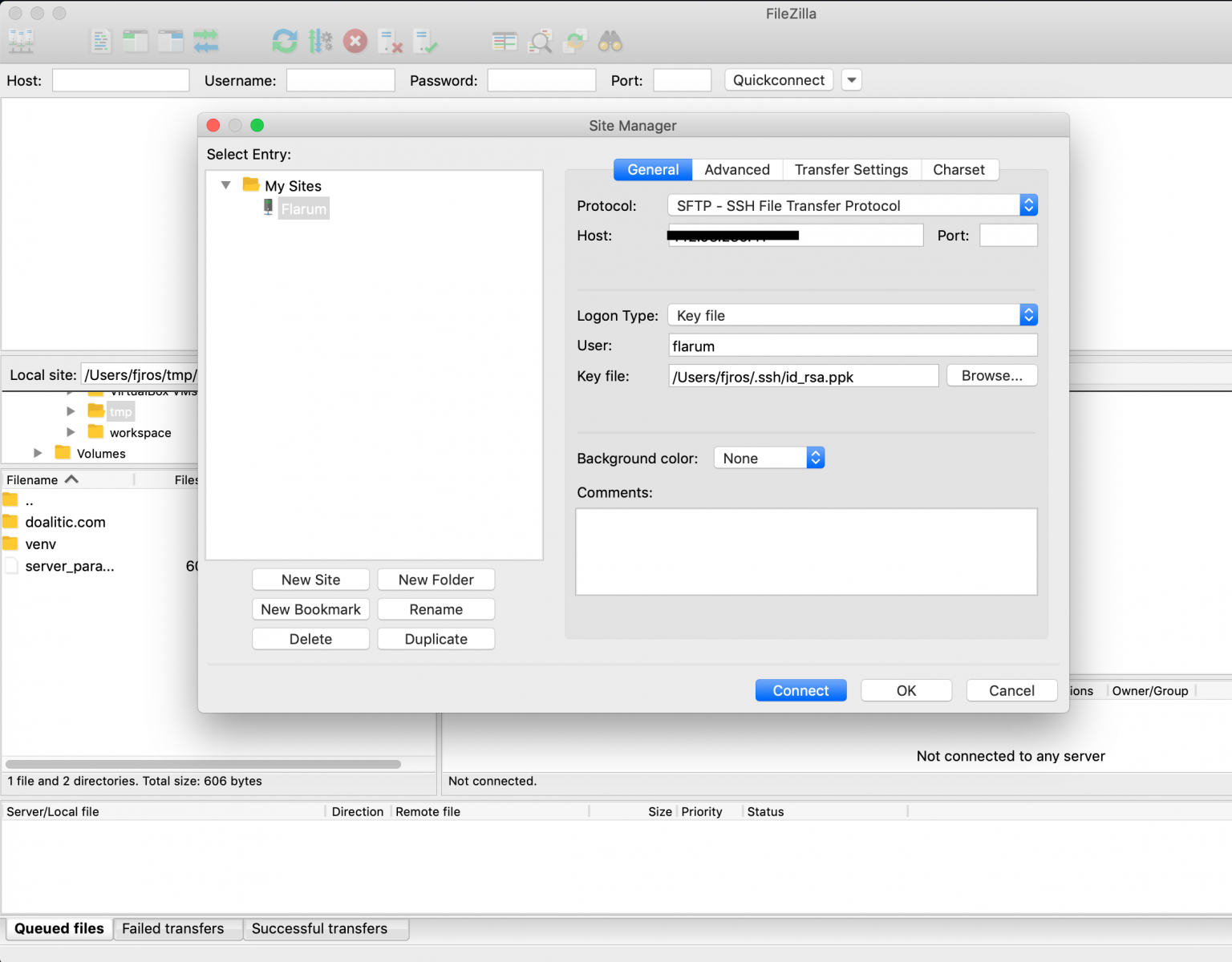

- #Filezilla sftp with ssh keys how to#
- #Filezilla sftp with ssh keys pro#
- #Filezilla sftp with ssh keys Pc#
Next, from the protocol dropdown select SFTP – SSH File Transfer Protocol. With the Site Manager open click on New Site to give your site a name. Once you've got things open up, click the Open Site Manager button in the top right or select File > Site Manager from the menu.
#Filezilla sftp with ssh keys Pc#
The user's private key is kept secret and stored locally on the user's PC while the user's public key is uploaded and registered on the SFTP server the user connects to. The user's Public & Private Keys are a pair of keys used to authenticate a client when it connects to an SFTP server.
#Filezilla sftp with ssh keys pro#
Now simply launch FileZilla Pro and connect to your server using SFTP using SSH2 with a username and an empty password. Follow the prompt to enter your pass phrase and you're done.
#Filezilla sftp with ssh keys how to#

Now, you will be able to select your new site from the site manager dropdown:Ĭontinue to build up your skills with these articles: Now that you have your key saved in a secure location, open the FileZilla app and click on the site manager icon:Ĭlick the New Site button to create a new site.įor the new site settings, configure the settings with these parameters: Protocol SFTP Host Logon type Key file User root Key file

You will be using your private key, which is more secure. Later, when adding this key to FileZilla, it will be converted to a format that FileZilla uses to establish your secure connection.Īgain, as with SSH logins, you are not going to use passwords. If you used RSA, the keys will be appended with "rsa" instead of "dsa" but they will function exactly the same in practice.īefore configuring FileZilla from inside the app, do yourself one quick favor and copy your private key from the ".ssh" directory and into a convenient location that done, rename the file and append the ".pem" extension.įor example, you should have a file that looks something like this: my-key.pem. Some tutorials will use the RSA encryption algorithm instead of DSA. Your keys will be saved as id_dsa (private key) and id_dsa.pub (public key). Thisĭirectory is hidden by default, but while you're on the terminal you The keys are saved, by default, in the ~/.ssh directory. Follow any remaining prompts, and your keys will When prompted on where to save your key, press Enter.

This command will start the process of generating your keys: ssh-keygen -t dsa So whether you’re using Windows, Mac, or a Linux-based operating system, you should be able to open your default terminal app and run the following commands. The following procedure is operating system agnostic. The public key is safe to share and place on your server, while the private key must only remain on your local workstation. Below, we will show you how to create two keys on your local computer: a public key and private key. In concept, the key arrangment is simple. Public/private key security provides you with advanced cryptographic protection, but the benefits depend on your ability to manage your keys properly.


 0 kommentar(er)
0 kommentar(er)
